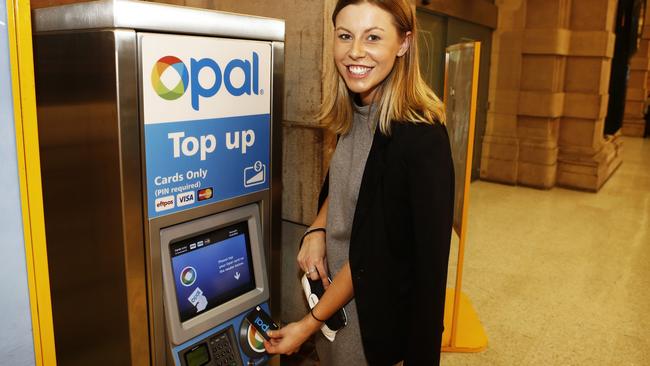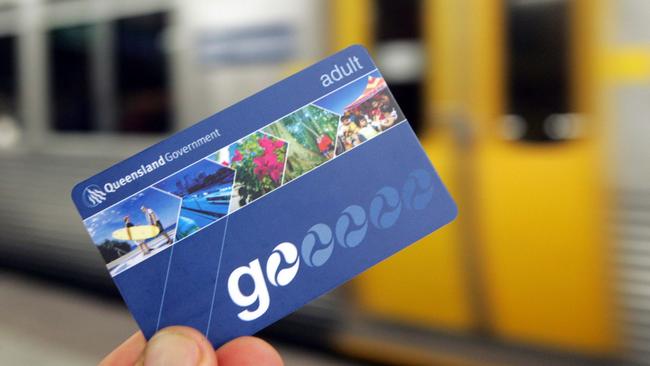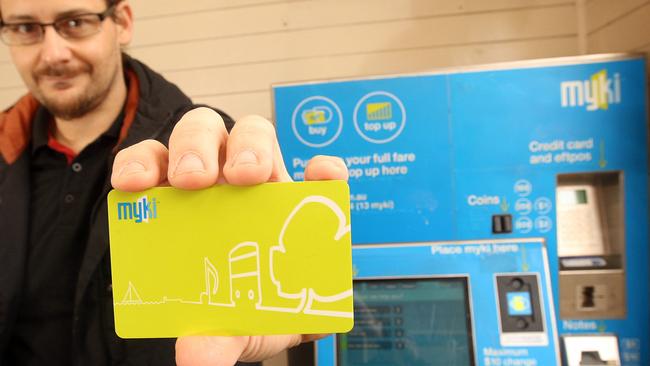Most Australian transport networks ill prepared for smartcard replacements
SMARTCARDS like Opal, Myki and Go are being phased out overseas, and our cities are playing a costly game of catch-up.
AUSTRALIAN commuters could be left behind when it comes to the coming global wave of public transport improvements, an expert in the field has warned, meaning taxpayers will likely be slugged with a bill running into the hundreds of millions of dollars to update ageing infrastructure.
The delay could mirror the introduction of travel smartcards to Australia, such as Opal, Myki and Go, which happened years, or even decades, after major cities overseas had switched to tap and go.
The head of global payments giant MasterCard’s ‘transit centre of excellence’, Will Judge, spoke exclusively to news.com.au as he visited senior transport officials and politicians in Australia to spruik the next leap in ticket technology.
But Mr Judge, who used to work for Transport for London, the UK capital’s transport authority which introduced the Oyster smartcard in 2003, said one Australian city “took some wise decisions” and was ready for the new technology.

NEW WAY TO PAY
Since October 2014, Londoners have been at the forefront of a simpler way to pay for their tube and bus journeys. Instead of queuing at ticket machines to reload their Oyster cards, they can now just use their bank cards to pay wave their way through the barriers with the money deducted directly from bank accounts.
Around one in four journeys in London, or more than a million a day, were now being paid with bank cards, said Mr Judge. Passengers can even use their phones to pay for travel.
Transport systems needed to be easy to use or people will choose to drive instead, he said.
“How can you stop the thought process of someone going, ‘I’m in a hurry, I’d like to get on that bus, can I get a ticket in that shop over there and will the bus still be there when I get back?’ to a much more spontaneous, ‘great there’s a bus, I’ve got something in my pocket I can pay with, I just get on, tap and ride it.’”
Using bank cards has another benefit — you don’t need a wallet full of different smartcards for different cities. A bank card from Sydney could be just as easily used in Melbourne or Singapore.
“It makes sense to make transport systems as accessible to the transient as well as the core population,” said Mr Judge.

MasterCard data showed Australians, the world’s most enthusiastic adopters of contactless payments, are behind only the Italians and the Brits themselves when it comes to tapping onto the tube with their own cards.
EXPENSIVE UPGRADES
But it’s unlikely they’ll get the opportunity to do the same in much of Australia any time soon with many transport ticketing systems simply too old to be converted for use with debit cards.
Neither south east Queensland’s $140 million Go Card system or Public Transport Victoria’s [PTV] bespoke $1.3 billion Myki system, both of which went live in 2008, were likely to be able to make the change without significant and expensive upgrades, said Mr Judge.
Contactless payments were only a twinkle in MasterCard’s eye in the mid 2000s, he said, let alone many transport authorities. “If I put myself in the shoes of PTV, you probably wouldn’t have observed a contactless industry on the horizon that looks anything like it does today.”
The costs to make the systems compatible could be high. London started looking at contactless payments for transport in 2008 and has spent $150 million updating barriers to accept debit cards.

Either the money is spent to adapt the current systems or Australians will have to wait until the equipment expires and has to be replaced anyway.
Head of the Public Transport Users Association, Daniel Bowen, told news.com.au Myki wasn’t designed for contactless card payments.
“We’ve seen a number of issues with the Myki system, many of those are because during its implementation they weren’t looking closely enough at other systems. You would hope it is possible to enhance Myki to allow credit cards payment but it would be important to do that in a cost effective manner.”
WINDOWS 2000
A spokeswoman for PTV said the organisation was in the midst of a tender process to operate Myki from 2017. “Our main focus is the continuity of ticketing services but the chosen vendor must have the capability to identify and deliver future technologies.”
Robert Dow of transport advocacy group Rail Back on Track said Brisbane’s Go Card was so old it was still using Windows 2000, “The problem with Go is it’s based on early technology and it’s very inflexible in what it can actually do. To update it to accept bank cards will take a massive backroom investment and the government won’t do that because they’re looking at a new system anyway.”

Last month, the Queensland Government signed a contract that will see the current system maintained for a further three years meaning bank cards may not be accepted in the smart state until the early 2020s.
A spokesman for the Department of Transport and Main Roads said they were in the early stages of a “procurement process for the next generation ticketing solution” and, as such, “we are yet to understand what a new system could look like”.
APPLE PAY
However, in true hare and the tortoise fashion, one Australian city could beat all the rest to accepting bank cards precisely because it introduced smartcards so late it has been able ensure the new technology was already installed.
“We believe that Transport for NSW [TfNSW] took some wise decisions in equipment they purchased that seemed to suggest they had an eye to the future,” said Mr Judge.
Opal, Which cost $1.2bn to install, is still being fully rolled out in NSW, but its likely Sydneysiders could be the first in Australia to tap on with their bank cards and potentially even with their phones as cards migrate to systems such as Apple Pay.
A spokesman for TfNSW told news.com.au that the organisation’s aim was to roll out smartcards “and then plan for the next stage.”

“The Opal platform is flexible and scalable so it can migrate to the next proven and stable payments technology.”
While TfNSW wouldn’t give a date for allowing bank cards to be used they said they were monitoring new fare payments systems around the world.
Tourism and Transport Forum Australia CEO Margy Osmond said contactless payments for public transport were the way of the future. “It’s the next logical step to improving the customer experience and importantly breaking down the barriers for visitors using a strange public transport system.”
Could Mr Judge see a day when even bank cards were obsolete for travel payments? “Yes, eventually,” he said. “It’s possible it might be common place to have a constellation of things to transact from — a phone, a ring on the finger or it might be their spectacles.”




